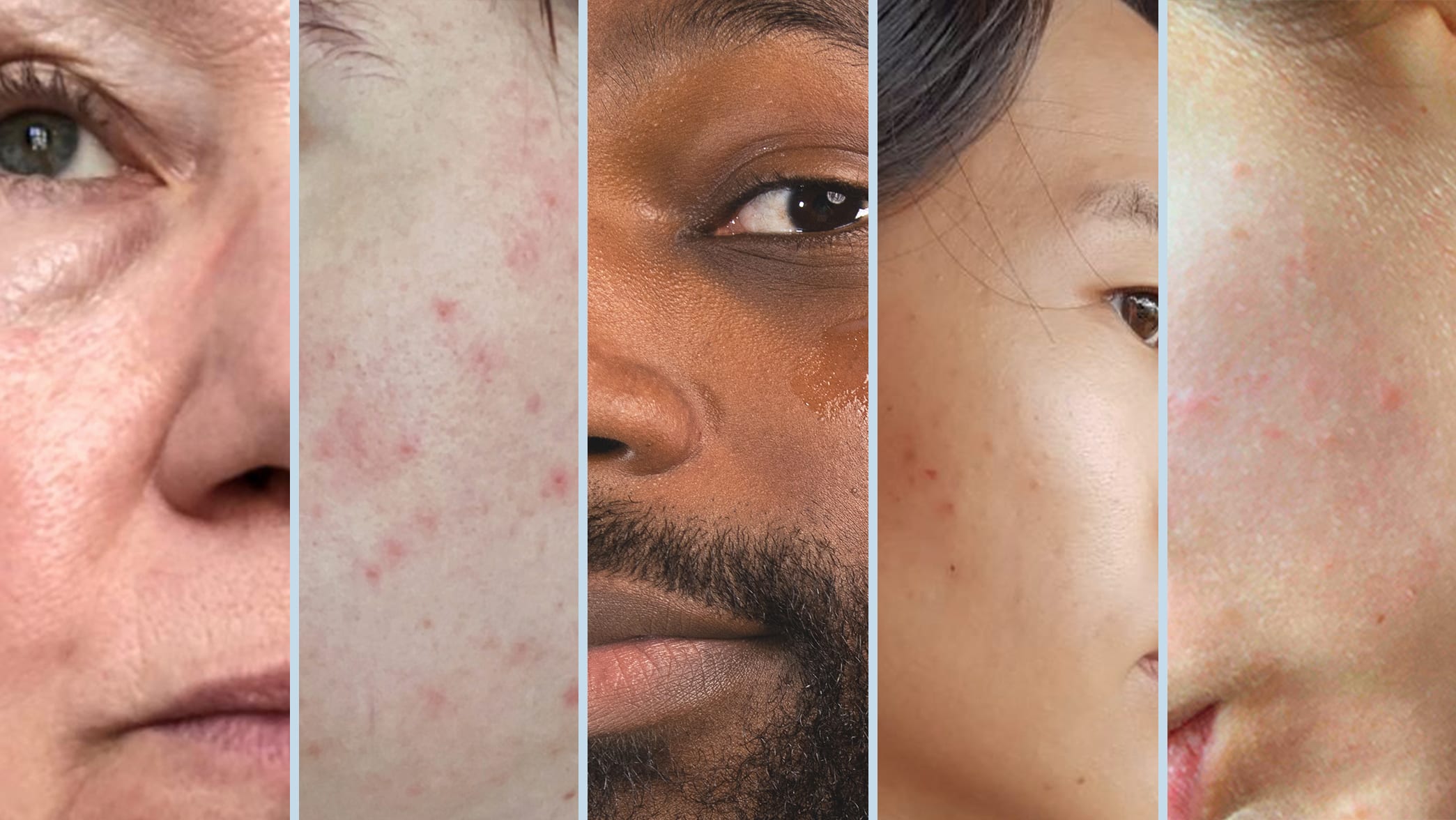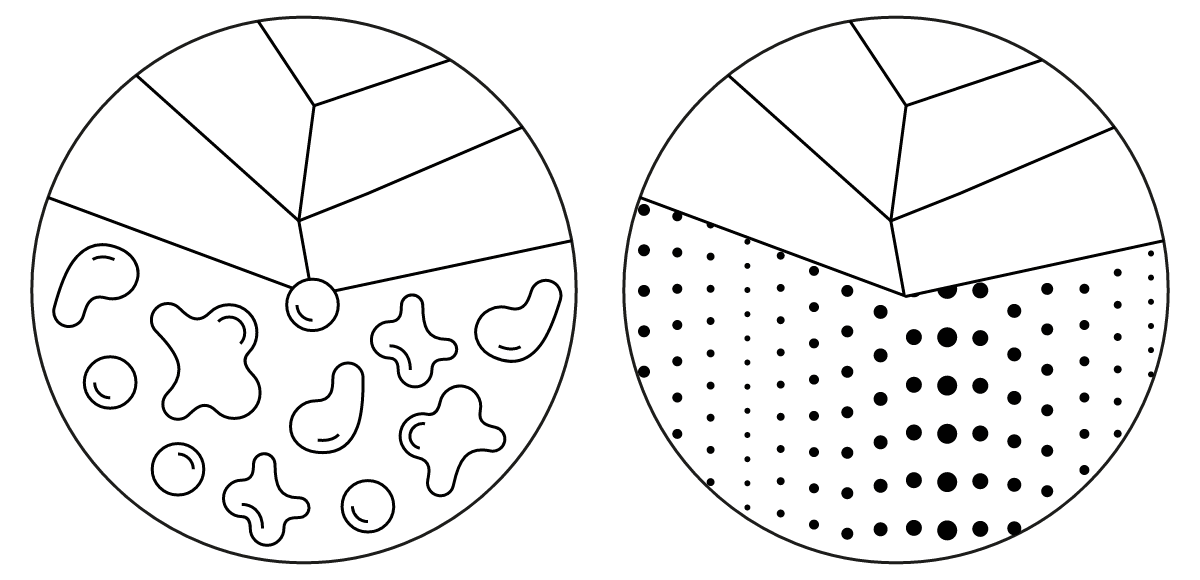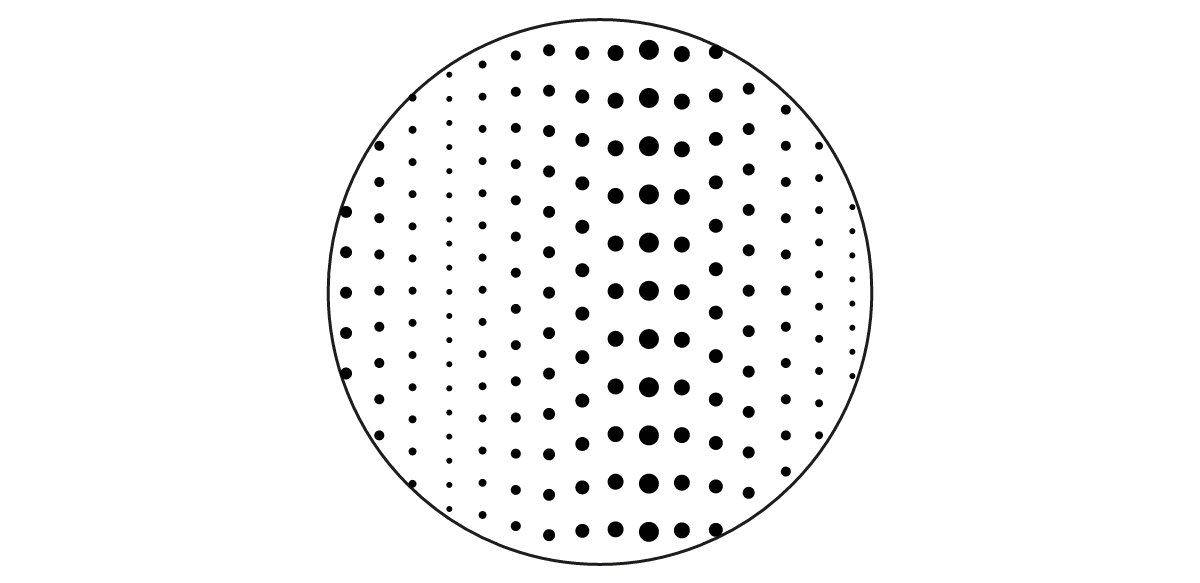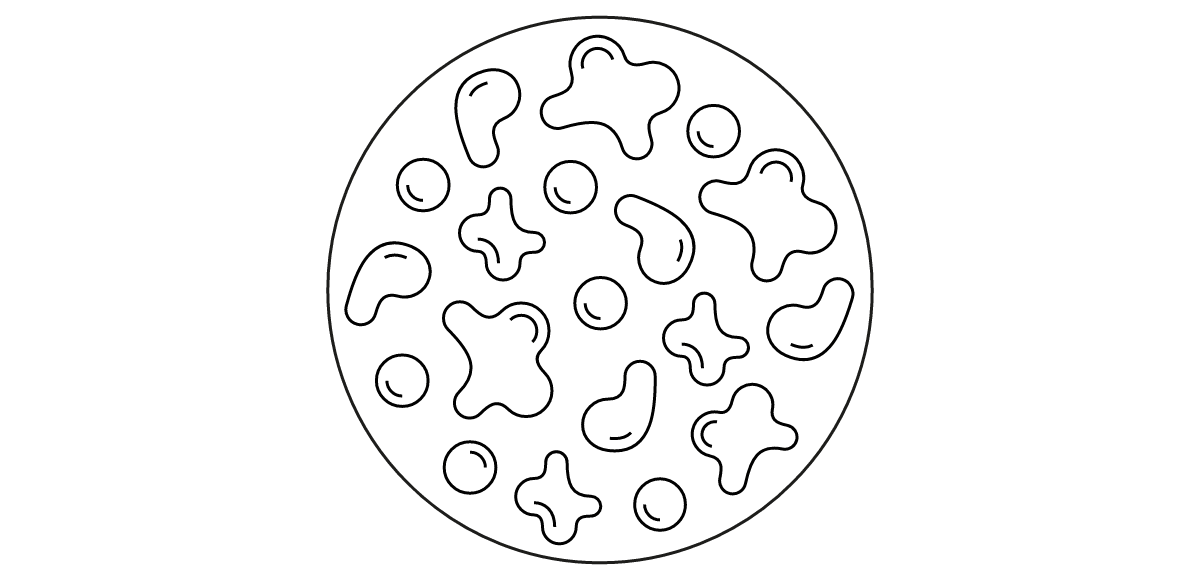What are the different types of skin
Learn how to identify your skin type as we break down the 5 different skin types. Take our skin test and get your customised skincare today.

The 5 different skin types
Skin’s a complex matter. Not only is it your biggest organ, you may also identify your skin as several skin types. Oh, not to forget: Your skin type and skin needs may change over time.
To make skin matters more complex, there are more than 10.000 diagnosable skin diseases. With that said, we believe it pretty obvious that skin, or skincare, isn’t a one-size-fits-all matter.
We like to say that your skin’s unique, but not unique-unique. If you’re wondering what the heck we mean by that, we get you. It means that we see you and your skin as unique, but that you probably still share similar skin traits with other people out there.
And with that said, figuring out one’s skin may be quite complex too.
There is a general understanding that there exist 5 different types of skin. Following that premise, the 5 different skin types are: normal skin, oily skin, dry skin, combination skin and sensitive skin. And this is without even elaborating on the skin conditions.
Before diving into the specifics on the different skin types, it’s important to note that there also exists a different kind of skin classification that prevails over skin types. It’s referred to as skin prototyping, meaning how the skin responds to sun exposure, e.g. how one’s skin has a tendency to sunburn and one’s skin’s ability to tan. The most widely accepted method is the Fitzpatrick scale.
The Fitzpatrick scale goes from 1 to 6, with 1 referring to pale, white skin and 6 to dark, black skin.
With different skin types come different skin needs.
Now, this doesn’t mean that your skin belongs in one category throughout your entire life or at this point in time. Your skin may belong to different categories and your skin may change over time. If that’s the case, your skin’s needs are most likely to change as well.
Not sure what skincare you need for your skin? Take our skin test and let us customise skincare specifically for you.
What is my skin type?
As different skin types most times require different skincare products, figuring out one’s skin type is imperative if you’re looking to take good care of it.
It goes without saying that if you have dry skin you’re likely not to fully benefit from skincare made for, or customised to, a dry skin type.
Fear not, we’re here to help you figure out what your skin type is.
How to determine my skin type?
Look through each skin type as described below to see which one(s) sound the most like your skin.
Before you take on your reading glasses and go through each skin type, it’s worth noting that you may identify your skin type as more than 1 - and that’s perfectly normal.
Here’s how the 5 different skin types are generally described/characterised:
Normal skin type
Normal skin can be characterised by not being too dry, too oily and well-hydrated naturally. It’s usually little to not sensitive, meaning you’re often able to apply a broad range of different products (and active ingredients) to it without getting a negative reaction.
Normal skin may also be referred to as well-balanced skin. Well-balanced skin refers to the skin’s sebum production and moisture level naturally, i.e without the help from skincare products, being in a well-balanced state.
We’re not really fond of the term “normal skin” as it implies that every other skin type is… well, abnormal. We believe that all skin is normal skin, but for the sake of simplicity and education, we’re applying the most commonly used terminology within skin and skincare.

How to care for normal skin type
A skincare routine for the normal skin type can be rather simple and actually less unique as it’s mostly about maintaining the skin’s balance. Despite having well-balanced skin, external stimuli and seasonality can affect it negatively. This means that the skincare routine should reflect these challenges that could potentially mess up the balance.
Let’s break it down: We believe the minimum of all skincare routines should consist of cleansing, moisturisation, and protection (sunscreen). Among these three product types, it’s primarily the moisturisation part that should change accordingly with external stimuli and seasonality. That means that the moisturiser, like a Face Cream, should follow seasonality: Light creams during summer, whereas a more occlusive one is prefered during wintertime in order not to experience dryness.
Combination skin type
As the name indicates, this skin type is characterised as being a combination of different skin symptoms. That means combination skin type often reflects subsets of different skin type features. It can be a combination of oily and dry skin, where you’ll typically be oily in the T-zone of the face and dry on the cheeks.
Combination skin can also be a combination of dry skin and sensitive skin. Dry skin is generally more prone to sensitivity, because the barrier function (the skin’s protection layer) is depleted. If your skin regularly reacts to products - like an inflammation of the skin as the result of a new skincare product - it’ll likely remain sensitised for some time afterwards, and your skin will need to be treated accordingly.

How to care for combination skin type
Due to the diverse nature of combination skin, and the potential conflicting ingredients needed to benefit the different symptoms of combination skin, there’s a clear need for a precise and oftentimes complex routine. Still, the basic routine can be boiled down to cleanse, moisture, and protect.
The moisture part can consist of multiple product types. Fundamentally, a Face Cream should also be part of the routine, but depending on the severity and nature of your skin, Spot Treatments and Serums may be needed. Spot Treatments make sense when there are local impurities that would be impossible to target with a dedicated cream, as it would increase the severity and tolerance of the areas with dry or sensitive skin. On the other hand, alleviation of the areas affected by dry skin would depend on moisture retention and occlusive properties, which are most likely to antagonise the improvement of impurities. In these areas, a Serum is a way to boost the skin's hydration. Due to the fast absorbing nature of serums, it can actually be facilitated without conflicting the areas of impurities or oiliness.
Trying to benefit different needs may require specific ingredients and this can potentially result in an ingredient conflict. That happens when you mix ingredients that can't be used at the same time. So by having different products covering different skin needs, the routine can be built as a n AM and a PM use of the products, thereby facilitating all needs without compromising the skin's integrity.
Sensitive skin type
Do you often feel like your skin is itching, burning, stinging or tight after applying personal care products or a sudden change of temperature? You may have sensitive skin then.
Sensitive skin is characterised as skin that’s sensitive to external factors, whether that’s a certain climate (especially dry and cold climate), makeup, soap or skincare.
Moreover, this skin type is often characterised by having an impaired skin barrier function and, as described above, an increased vascular reactivity.

How to care for sensitive skin type
Also for sensitive skin, we recommend a skincare routine that, as a minimum, cleanse, moisture, and protect the skin. It’s vital that the skincare products used for sensitive skin are gentle. Especially when it comes to the choice of cleanser. First of all, cleansers are designed to remove dirt and oil from the skin, which means that it, to some degree, removes the skin’s protective barrier. A barrier that’s oftentimes already compromised for people with sensitive skin. In other words, the cleanser should cleanse (duh), but not strip the skin completely. The surfactants responsible for the cleansing properties should be well-tolerated and gentle (sorry for spamming gentle, but it’s pretty important in this context).
Regarding the moisturiser, it should support the sensitive nature of the skin and at the same time reinforce the skin’s barrier integrity.
Oily skin type
Oily skin is a skin type that’s characterised by having an overproduction of the skin’s natural oil (sebum) production. This often leads to clogged pores and as a result pimples.
Oily skin is usually quite exposed to acne and breakouts.

How to care for oily skin type
When it comes to elliviation oily skin, the cleanser should be efficient, maybe even to the “harsh” end of the spectrum, in order to strip the skin from exceeding oil. The tendency of a hyperactive sebum production also means that the moisturising cream should be lighter than for other skin types, as the occlusiveness is more than sufficiently obtained by the sebum. The action of the cream should instead be to ensure pore unclogging, matifying of the oil, and lastly try to reduce the skin’s sebum production.
Dry skin type
Dry skin typically appears rough and flaky, and feels tight to the touch; in severe cases, it can lead to lines or cracks and intense itching.
Most of us have experienced dry skin at some point in our lives. For many people, dry skin is a temporary state caused by specific triggers — like seasonal or lifestyle changes, or medication.
Dry skin often affects specific parts of the body, like legs, hands, etc., or shows up as small patches on specific areas of the face.
Most times, dry skin comes from the loss of the natural layer of protective lipids which covers the surface of the skin. This causes the skin cells to become more exposed, which makes them lose moisture to the surrounding environment. Dry skin can be caused by low humidity due to weather, air conditioning, or central heating. It can also occur as a result of the ageing process or as a reaction to certain medications.
When experiencing dry skin, it’s important to act quickly — because its severity often evolves over time.
Dry skin can lead to severe itching, cracks, and even more loss of that protective oil barrier. Furthermore, intense itching can lead to skin infections, which naturally result in another set of complications beyond the ones related to dry skin.

How to care for dry skin type
The skincare routine catering for dry skin should also follow the approach of cleanse, moisturise, and protect. For the dry skin type, it’s important that the cleanser is gentle, as a harsh cleanser potentially leads to adverse reactions due to the compromised barrier that’s often characterised by having dry skin. In respect to the moisturiser, it should be rich in respect to lipids and thereby it’s occlusive properties, and at the same time have a high concentration of so-called humectants - ingredients capable of attracting and binding moisture in the top layer of the skin.
Find my custom skincare routine for my skin type
Even with descriptions of each skin type, figuring out one’s skin type can be a tricky task. An equally difficult task, often even more tricky, is finding the exact right skincare for your specific skin. Good thing is that we make skincare customised to you and your skin. All you need to do is take our skin test and we’ll customise a skincare routine specifically for you. Oh, did we say you’ll even have your own name on the label?